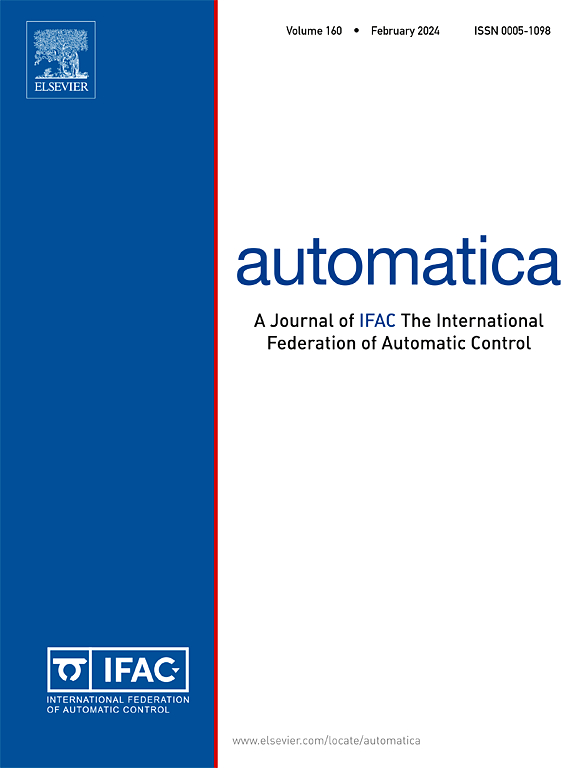Cooperative dynamic surrounding coverage control for multi-autonomous surface vehicle fleets with limited sensing ranges
IF 5.9
2区 计算机科学
Q1 AUTOMATION & CONTROL SYSTEMS
引用次数: 0
Abstract
Cooperative surrounding coverage by a multi-autonomous surface vehicle (ASV) fleet involves dynamic coverage with concentric moving trajectories. This low-cost form of coverage, which operates with limited perceptual ranges, has long presented a significant challenge in real-world collective marine detection applications. To this end, the paper establishes a surrounding coverage control framework that minimizes the required number of ASVs by covering a designated region across multiple consecutive periods. A distributed randomized gradient-free (DRGF) protocol is thereby proposed to identify the optimal central point of the coverage region. Accordingly, a distributed control law is designed to regulate the ASV dynamic surrounding coverage operation around the optimal concentric point. Significantly, sufficient conditions are derived to guarantee the asymptotical convergence of the closed-loop multi-ASV fleet governed by the present DGRF. Finally, experiments are conducted on a self-established lake-based multi-ASV fleet platform to verify the effectiveness of the present surrounding coverage scheme.
有限感知距离下多自主地面车辆的协同动态周围覆盖控制
多自主水面车辆(ASV)车队的协同周围覆盖涉及同心移动轨迹的动态覆盖。这种低成本的覆盖形式,在有限的感知范围内运行,长期以来在现实世界的集体海洋探测应用中提出了重大挑战。为此,本文建立了一个周边覆盖控制框架,通过在多个连续时期覆盖指定区域来最小化所需的asv数量。为此,提出了一种分布式随机无梯度(DRGF)协议来识别覆盖区域的最优中心点。在此基础上,设计分布式控制律,以最优同心点为中心,对ASV动态周边覆盖操作进行调节。重要的是,得到了在该DGRF控制下闭环多asv群渐近收敛的充分条件。最后,在自建的基于湖泊的多asv舰队平台上进行了实验,验证了所提出的周边覆盖方案的有效性。
本文章由计算机程序翻译,如有差异,请以英文原文为准。
求助全文
约1分钟内获得全文
求助全文
来源期刊

Automatica
工程技术-工程:电子与电气
CiteScore
10.70
自引率
7.80%
发文量
617
审稿时长
5 months
期刊介绍:
Automatica is a leading archival publication in the field of systems and control. The field encompasses today a broad set of areas and topics, and is thriving not only within itself but also in terms of its impact on other fields, such as communications, computers, biology, energy and economics. Since its inception in 1963, Automatica has kept abreast with the evolution of the field over the years, and has emerged as a leading publication driving the trends in the field.
After being founded in 1963, Automatica became a journal of the International Federation of Automatic Control (IFAC) in 1969. It features a characteristic blend of theoretical and applied papers of archival, lasting value, reporting cutting edge research results by authors across the globe. It features articles in distinct categories, including regular, brief and survey papers, technical communiqués, correspondence items, as well as reviews on published books of interest to the readership. It occasionally publishes special issues on emerging new topics or established mature topics of interest to a broad audience.
Automatica solicits original high-quality contributions in all the categories listed above, and in all areas of systems and control interpreted in a broad sense and evolving constantly. They may be submitted directly to a subject editor or to the Editor-in-Chief if not sure about the subject area. Editorial procedures in place assure careful, fair, and prompt handling of all submitted articles. Accepted papers appear in the journal in the shortest time feasible given production time constraints.
 求助内容:
求助内容: 应助结果提醒方式:
应助结果提醒方式:


